Your Cart is Empty
FREE SHIPPING ON ORDERS OVER $20 - FREE HEALTHY SNACK WITH EVERY PURCHASE
Our site uses cookies. By using our site, you agree to our use of cookies. Privacy Policy
Menu
-
- Health Conditions
- Maximum Performance
- Accessories & Gear
- Altitude Training
- Athlete Overtraining Syndrome
- Core Strength
- Dangers of NSAIDS
- Detox / Cleanse
- Endurance Nutrition & Supplementation
- Energy Boosting
- Exercise & Immunity
- Flexibility
- Hydration
- Hypoglycemia / Bonking
- Hyponatremia
- Immunity Support
- Lab Testing
- Muscle Building
- Recovery
- Sports Drinks
- Package Bundles
- Adrenal Support
- Healthy Aging
- Athletic Performance
- Blood Sugar Balance
- Bone Support
- Daily Nutrition Essentials
- Daily Wellness
- Energy Support
- Fat Loss Support Bundle
- Female Fertility Bundle
- Female Hormone Balance
- Gut Health
- Heart Health
- Immunity Boosters
- Inflammation Control
- Injury Repair
- Joint Support
- Liver Support
- Menopause Support
- Men's Wellness
- Mood Lift
- Muscle Cramp Relief
- Muscle Builder
- Recovery
- Safe Travels
- Sleep Enhancers
- Stress Relief
- Thyroid Support
- Brands
- Blog
-
- Login

FREE SHIPPING ON ORDERS OVER $20 - FREE HEALTHY SNACK WITH EVERY PURCHASE
Our site uses cookies. By using our site, you agree to our use of cookies. Privacy Policy
How To Relieve Post Exercise Muscle Soreness
April 01, 2016 3 min read

Delayed onset muscle soreness or DOMS, is that wicked pain that shows up a day or two after a big event and always seems to bring to mind the phrase "never again" and for the more hearty athletes among us “how can I get rid of this pain?”
Please don't reach for the ibuprofen for post exercise pain. It’s nasty stuff. Rather, there are several effective and safe therapies you can use to lessen the pain of DOMS.
To Massage or Not to Massage?
Massage is often touted as the cure for DOMS. Unfortunately, there’s no evidence that massage will speed up pain resolution from DOMS; it is of course great for other muscular aches and pains.
Don’t get me wrong, getting a massage is fine, but remember the cause of DOMS are microscopic muscle tears and inflammation. Anything other than a very, very gentle massage will just be painful for you.
The important thing to do is to keep moving – this increases circulation through the muscles, speeding repair as the blood can deliver nutrients and removed inflammatory waste products from the muscles.
Things like a very gentle massage (and I mean very!), easy stretching or yoga, and epsom salt baths all serve to keep the blood flowing and will speed healing. Staying sedentary will just make the soreness last longer!
Ginger
A popular natural anti-inflammatory, ginger has even been studied specifically for its pain relieving effects on muscle soreness. In one pain relieving study, subjects reported a 25% reduction in post-exercise soreness. They took a large amount of ginger (2 grams) for several days before the event.
Leucine
Leucine is an important amino acid found in muscle tissue. Amino acids serve as the building blocks of protein tissue like muscle.
Leucine in one of the important branched chain amino acids that when taken in supplemental form, prevent muscle damage and degradation from overuse.
Leucine is found in good quantities in protein supplements or can be taken as part of a BCCA complex.
Curcumin
Curcumin is a well-known natural anti-inflammatory and pain reliever. In one pain reliever study, curcumin caused “moderate to large reductions” in DOMS and mildly reduced to inflammatory chemicals as well.In another study using Meriva, a specialized form of curcumin, subjects reported less leg pain after a downhill running test, lower increases of muscle damage and inflammation, and less MRI evidence of muscle injury compared to subjects that took a placebo. The subjects took 1000 mg Meriva twice daily for 2 days prior to, the day of and a day after the running test to achieve these results.
Cherries
Cherries have long been known to reduce levels of uric acid (the cause of gout, a painful joint condition). Cherries are rich in antioxidants and anti-inflammatory compounds that may exert a protective effect against muscle damage and pain during strenuous exercise. A study of runners consuming roughly 12 fluid ounces (the size of a typical soda can) for 7 days prior to, and the day of a 12-15 mile run lead to reports of “significantly smaller increase in pain” following the run.
Arnica
Arnica is a homeopathic medication found in topical creams like T-Relief. Well-known for speeding healing from injuries, arnica was shown to reduce muscle soreness in marathon runners in one muscle soreness study.
There you have it. I encourage you to try a few of these therapies next time you’ve got a big race or workout – I guarantee you’ll be up and at ‘em sooner, with less muscle pain!
Leave a comment
Comments will be approved before showing up.
Free Athletic Stuff
-
Free Water Bottle With Purchase Of $100

Simply Add To Cart & Use Coupon Code: FREEBOTTLE
Free Visor With Purchase Of $150

Simply Add To Cart & Use Coupon Code: FREEVISOR
{"statementLink":"","footerHtml":"","hideMobile":false,"hideTrigger":false,"disableBgProcess":false,"language":"en","position":"left","leadColor":"#146ff8","triggerColor":"#146ff8","triggerRadius":"50%","triggerPositionX":"right","triggerPositionY":"bottom","triggerIcon":"wheels","triggerSize":"medium","triggerOffsetX":20,"triggerOffsetY":20,"mobile":{"triggerSize":"small","triggerPositionX":"right","triggerPositionY":"bottom","triggerOffsetX":10,"triggerOffsetY":10,"triggerRadius":"50%"}}
